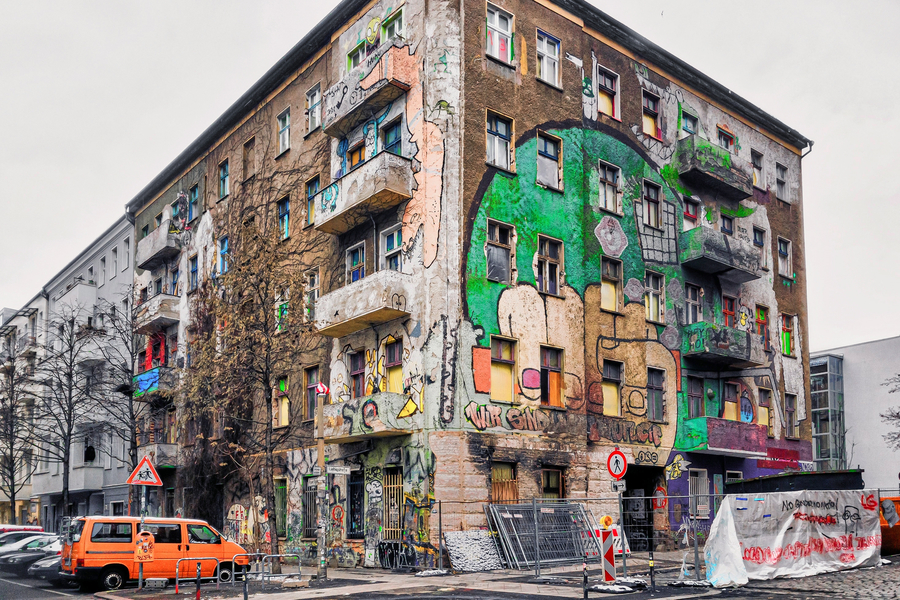
“Liebig 34” in Berlin Friedrichshain
“Liebig 34” was a symbolic housing project in the Berlin district of Friedrichshain that played a central role in the leftist autonomous scene for many years. The building was located at Liebigstraße 34, near Rigaer Straße – an area that had become a center for alternative lifestyles and political movements since the 1990s. Originally, the house was one of many buildings that had been left to decay by the city of Berlin or private owners after German reunification. In this context, it was occupied in 1990 when numerous activists began squatting empty buildings to create living space and, at the same time, establish political and cultural free spaces.
In the case of Liebig 34, the house was unique from the very beginning: it was soon declared a queer-feminist residential and cultural project. Over the years, Liebig 34 developed into a hub for radical feminist and anarchist ideas and practices. The house saw itself not only as a place to live but also as an explicitly political project. Many of the residents deliberately lived there as men, women or queer individuals in an environment intended to provide protection from patriarchal and state violence. The spaces offered room for political meetings, events, discussions, concerts and acts of resistance – always in the spirit of self-organization, solidarity and rejection of state control.
A key aspect of Liebig 34’s history was its legal status. After years of being tolerated, a rental contract was signed in 2008 between the owner – the London-based company “Lafone Investment Ltd.” – and the residents. However, the contract expired in 2018 and was not renewed. What followed was a lengthy legal dispute over the building’s usage rights, accompanied by an increasingly heated political debate in Berlin, where gentrification, housing shortages and police violence were central issues.
Despite numerous protests, demonstrations and political interventions, the eviction of the house was carried out in October 2020. On the morning of October 9, a large contingent of police – around 1,500 officers – moved in to clear the building. The operation was highly controversial in the public eye. While the Berlin Senate administration defended the eviction by citing property rights and court rulings, numerous civil society groups, activists and observers criticized the action as excessive and politically motivated. It was not only a physical eviction of a building, but also a symbolic act: the end of a decades-long experiment in alternative living and political self-organization.
After the eviction, the building was initially secured and later gutted. The owner announced plans to build new apartments on the site. At the same time, it became clear that the Liebig 34 project had an impact far beyond its physical structure. Many supporters viewed the eviction as a sign of Berlin’s increasingly repressive urban policies, which prioritized investor interests over alternative lifestyles. In leftist circles, Liebig 34 became a myth, a symbol of resistance against displacement, capitalism and patriarchal structures.
To this day, the project lives on in memorials, documentaries and political actions. Liebig 34 remains a defining chapter in the history of the squatter movement in Berlin – not just as a building, but as an expression of a mindset that viewed space not just as a place to live, but as a way to shape society.
This article was posted on July 6, 2025